LifeChar LifeChar
Technology Pyrolysis and Carbon Credits
Biochar for Agriculture & Energy

The use of Biochar has been known in agriculture since very ancient times in South America. It is an extremely fertile dark soil known as Terra Preta.
The rediscovery of the properties of vegetable charcoal and the considerable improvement in continuous pyrolysis techniques, such as CarboChar, bring gradually to development of Biochar worldwide. Its physical structure in cells (microscope photography) is a nest for microorganism. Its various chemical and biological properties are also major for the plants development.
In practice: It is important to know that Biochar can have variable characteristics depending, among other things, on the biomass chosen, the technology used, the temperature and the residence time in the machine. The use of Biochar is a science. The ideal is to be able to optimize the properties of Biochar to the specific problems of a soil. The CarboChar enables this precise adaptation of the parameters.
Benefits of biochar application in agriculture
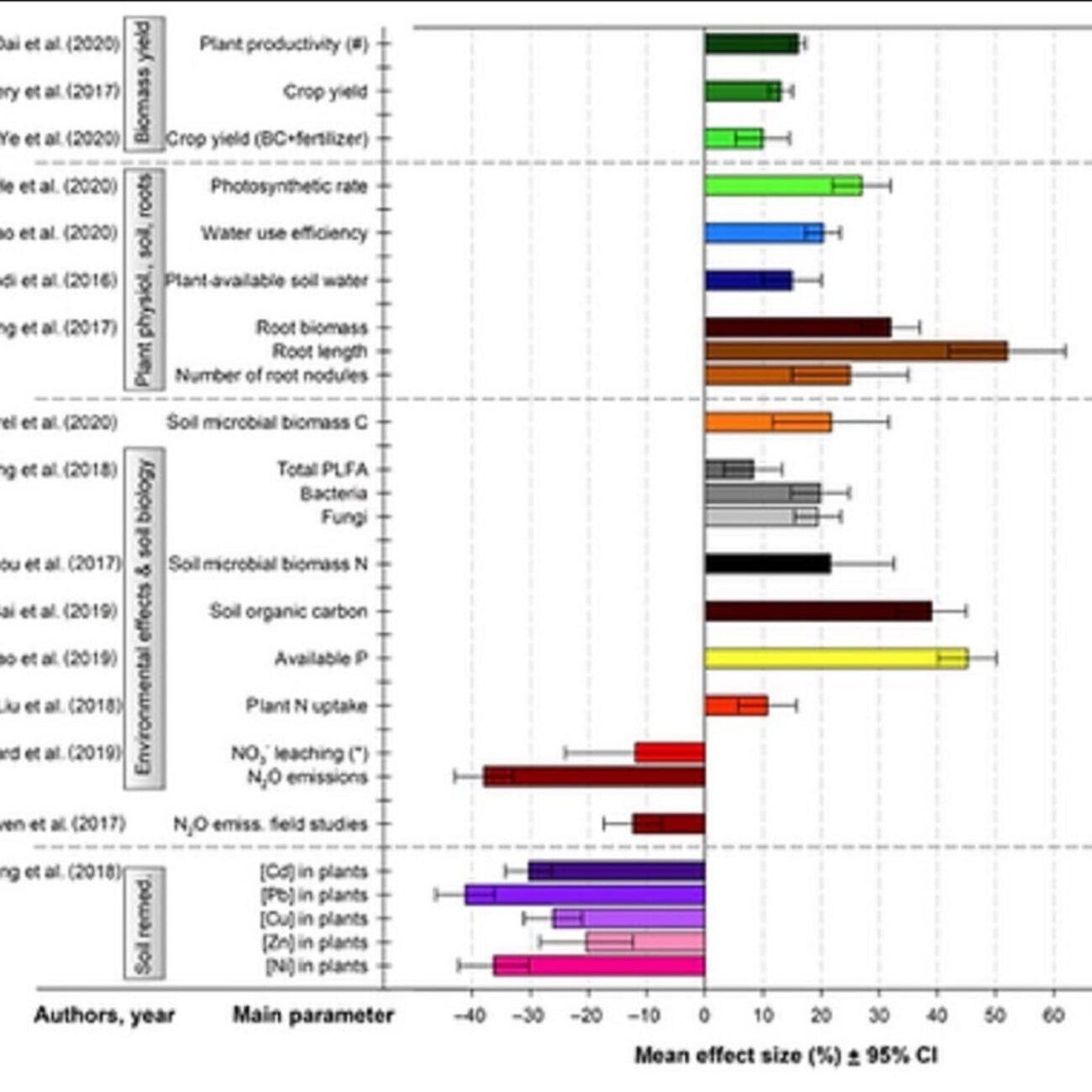
- Increased yields
- Less irrigation is necessary. Water retention improvement of the soil and lower wilting point
- Retention of nitrates in the soil. Reduction of leaching
- Contribution of highly bioavailable Phosphorus by Biochar
- Liming effect depending on the Biochar
- Greatly improve Cation Exchange Capacity
- Very strong stimulation of life in the soil, whether microbiological, macrobiological (earthworms) or mycorrhyzal
- Total biomass production increase including root that also enrich the soil in humus.
- Retention of heavy metals in the soil (therefore less contamination of the plant and then the consumer)
- Health of the soil and the plant (reduction of the necessary treatments)
- Better resistance of plants to soil salinization
- Erosion limitation
- Overall profitability of the crop (earnings minus expenses)

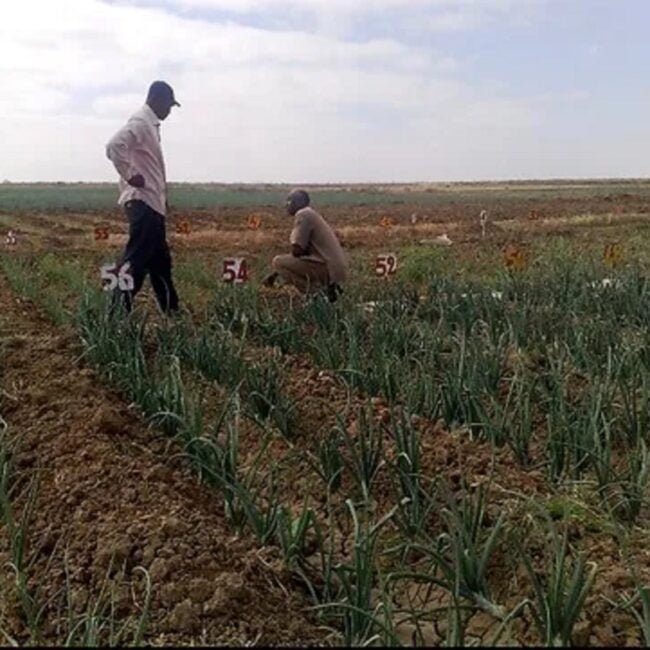
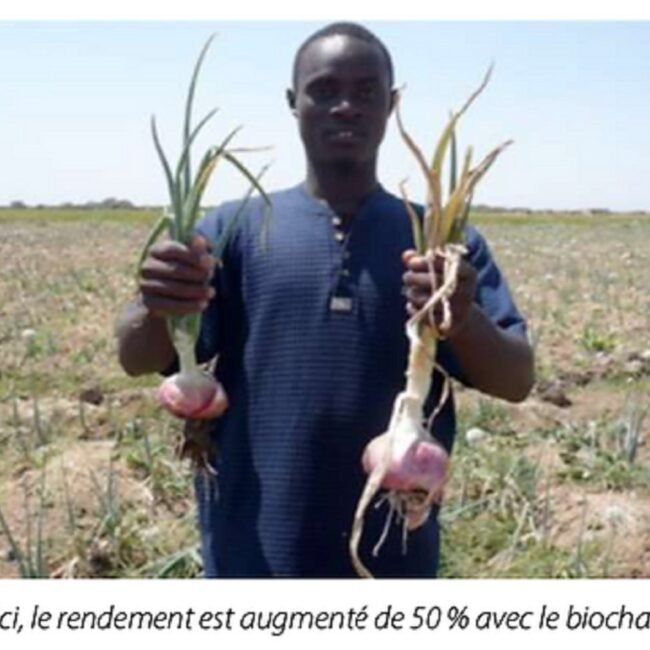
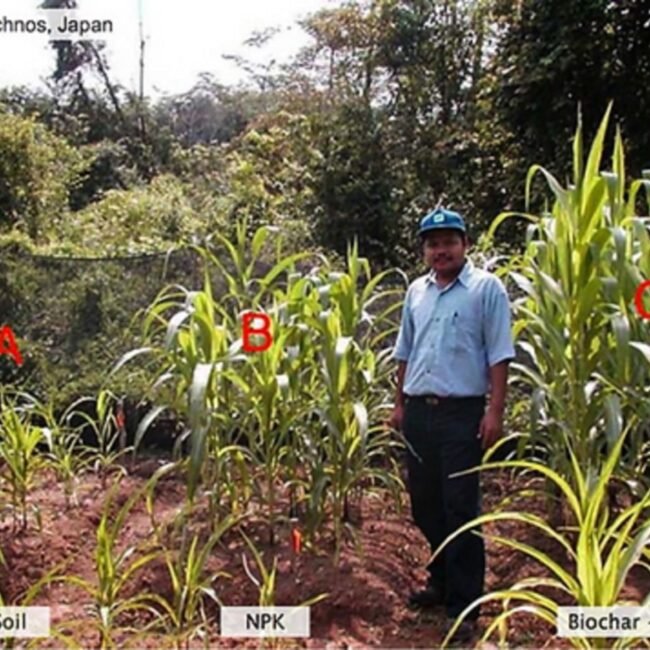
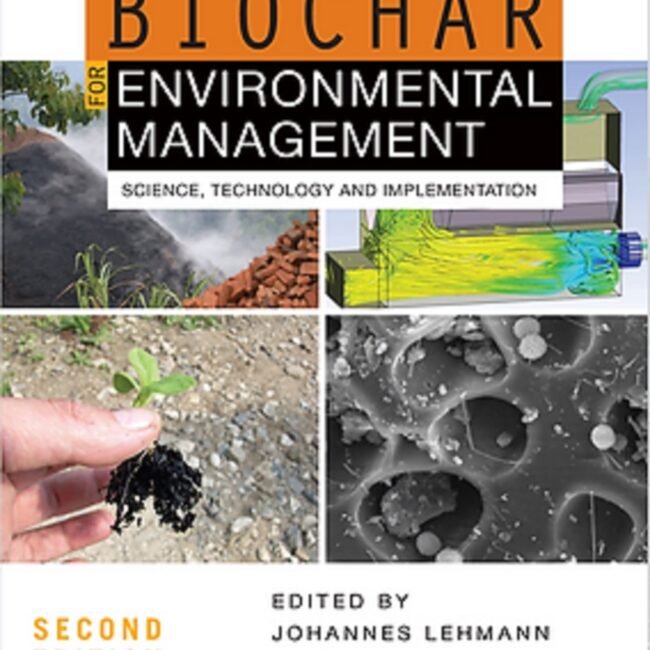

BioChar increases yield by 50%
- Biochar can be used alone or pre-mixed with compost to improve its short term efficiency. Trials conducted by Pro Natura International in Senegal (with Biochar from a previous CarboChar model) showed impressive yield increases on onions and rice, as shown in the following photos.
- Biochar science is currently experiencing an explosion of field studies and international publications.
Biochar for Energy
Green Charcoal
- The energy use of Biochar has different names: Bio-Coal, Green Charcoal It can advantageously replace traditional charcoal for its various culinary or industrial applications.
- Indeed, forest resources must absolutely be preserved or used for applications where there is no alternative. Green Charcoal is made from unused vegetable waste, so the carbon emitted by the combustion of this charcoal would have been emitted by the decomposition of vegetable matter anyway. By replacing charcoal with green charcoal, we save wood in large quantities (the production yield of conventional charcoal is between 10 and 20%).
- This carbon saving opens the right to the creation of specific carbon credits, which can be sold on the international market. A calculation methodology has been implemented by UNFCCC (United Nations Framework Convention on Climate Change).
To be used in the form of Green Charcoal
The Biochar produced by our CarboChar machine is agglomerated with a binder (starch, gum arabic or clay) then compressed in the form of pebbles or logs.
The use of Green Charcoal
The family use of this Green Charcoal in Africa has been a real success during our trials. Cooking is longer and progressive, without smoke. Consumer acceptability is therefore very good.
Green Coal produced with a CarboChar has many positive impacts:
- Convenient
- Decrease deforestation
- Recovery of unused plant waste
- Reduces health risks for workers (the manufacture of charcoal is otherwise very harmful to health)
- Creation of many jobs
- Assurance of price stability for this essential good for the African population (vegetable waste has a constant price while the price of charcoal is linked to the price of energy and availability of the forest).
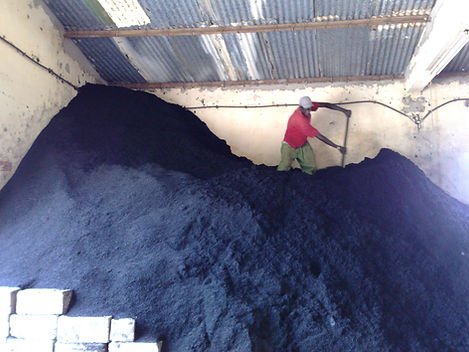

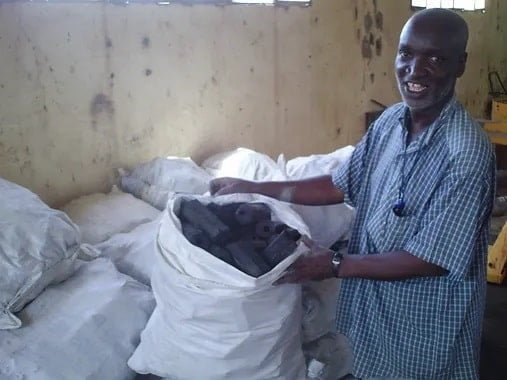


Open questions or project in mind?
Do not hesitate ! We will be glad to assist you with any questions you might have
Informations
- If you have any questions or a project in mind, do not hesitate to contact us directly by email at:
